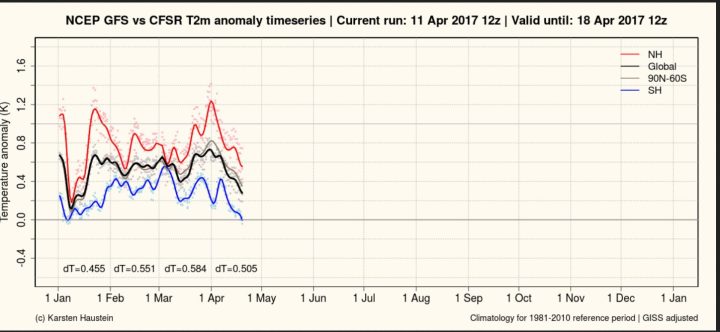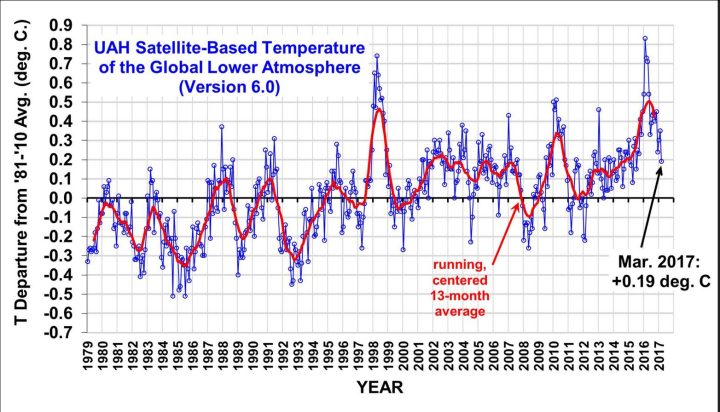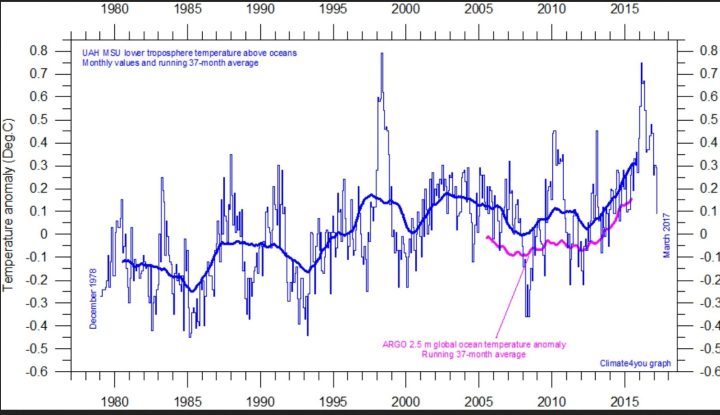By P Gosselin on 12. April 2017
Critical German climate site wobleibtdieererwaermung.de (WBDE) reports that the earth’s surface is cooling, and presents the latest chart from NCEP:
As of April 11, the measured global values continue to decline (black curve) as do the computed values for April 18. Source: www.karstenhaustein.com/climate.php.
The time-delayed post El Niño cooling is now showing up in the UAH and RSS satellite data.
Source: UAH Global Temperature Update for March, 2017: +0.19 deg. C
Foremost the atmosphere over the ocean – the largest storage of energy on the planet – cooled significantly over the month of March.
Especially remarkable is the 0.29°K drop in temperature above the global oceans measured by the UAH, and is now only 0.09°K above the WMO 1981-2010 climate mean.
The plot shows the anomaly from the 1981- 2010 mean, UAH satellite temperature in the atmosphere 1500 meters over the sea surface. (TLT). The rose colored curve shows the 37-month running mean of the ARGO buoys which measure the water temperature 2.5 meters below the sea surface. Source: www.climate4you.com/
The RSS satellite data also showed a significant drop in global surface temperature above the seas falling from +0.38°K above the mean to 0.18°K above the mean — a drop of 0.20°K.
Chart: Woodfortrees.org
Although there have been some ups and downs over the past months, the overall global surface temperature trend remains steeply downward, dropping more than 0.6°K since early 2016.
Moreover, the surface temperature above the oceans is significant as the oceans cover more than 70 percent of the earth’s surface.
The overall negative linear trend will likely continue over much of 2017 as the delayed effects of the disappeared El Niño work their way into the satellite data.
So is the pause over? WBDE writes:
Despite the warming effect of the powerful 2015/16 El Niño, the unfalsified satellite date show that the year 2016 did not produce any new significant global heat record compared to the 1998 El Niño year. […]
The claimed global warming by the IPCC climate models has been missing for almost 20 years! And that with continuously rising atmospheric CO2 concentrations!”
The question remains: what happens in the years and decade that follow? A new slightly higher plateau, or stuck at the current old plateau?
– See more at: http://notrickszone.com/2017/04/12/satellite-data-post-el-nino-global-surface-cooling-continues-pause-extends-to-20-years/#sthash.2XPmxaYl.dpuf





